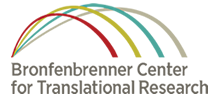
An estimated one in 11 U.S. adults will experience post-traumatic stress disorder, or PTSD, in their lifetimes.
PTSD occurs when people have intense and disturbing thoughts and feelings related to a previous traumatic experience. These can arrive in the form of nightmares or flashbacks and often make them feel like they are reliving a terrifying event. PTSD affects a person’s ability to function in everyday life, and it can persist for years.
Researchers have been working to better understand what’s happening in the brains of people with PTSD. A ground-breaking new paper published in the journal Nature Neuroscience offers insight into why traumatic memories function differently.
For the study, researchers at Yale University and the Icahn School of Medicine at Mount Sinai recorded audio from 28 people with PTSD; they shared various memories—happy or neutral, sad, and traumatic. Participants were then given a brain scan while listening to their recordings.
The brain scans showed differences in how participants’ brains processed each of their memories. People listening to sad memories consistently engage their hippocampus, the part of the brain that has a major role in learning and memory.
When they listened to their traumatic memories, they engaged a different part of their brain called the posterior cingulate cortex, or PCC. This region is involved in spatial navigation, scene processing, and self-imagery.
In essence, participants didn’t process traumatic memories as memories at all, but instead as present-moment experiences.
“This is consistent with the notion that traumatic memories are not experienced as memories per se,” said Ilan Harpaz-Rotem, professor of psychiatry and psychology at Yale School of Medicine and lead author of the paper. “Rather, these are fragments of prior events, subjugating the present moment to evade the comfort of belonging to the past.”
A common type of treatment for PTSD is prolonged exposure therapy and desensitization, where a therapist helps the patient revisit traumatic memories. This new research suggests that this type of treatment can address PTSD by helping patients convert their traumatic memories, processed in the PCC, into sad memories, which are processed in the hippocampus. This allows patients to stop feeling that the traumatic event is reoccurring in the present, and fully understand that it is a memory.
The take-home message: New brain imaging research provides insights into how traumatic memories function in the brain, and may open the door to more effective treatments for PTSD.


